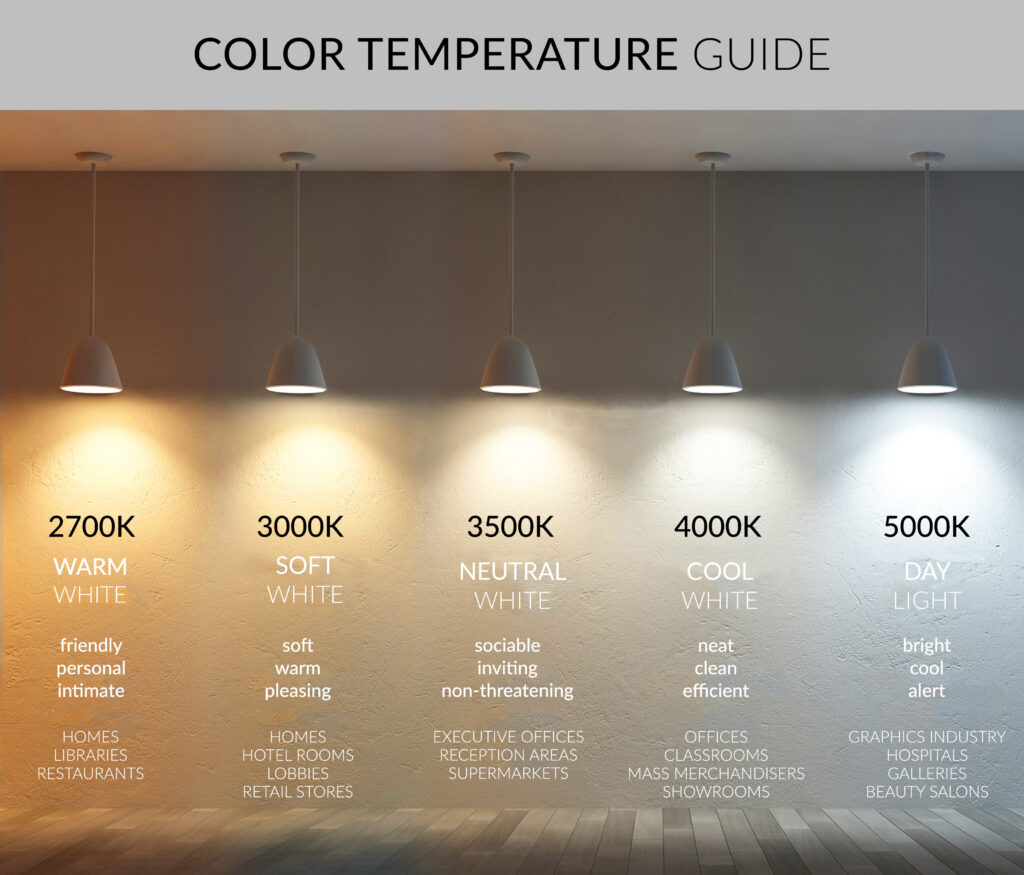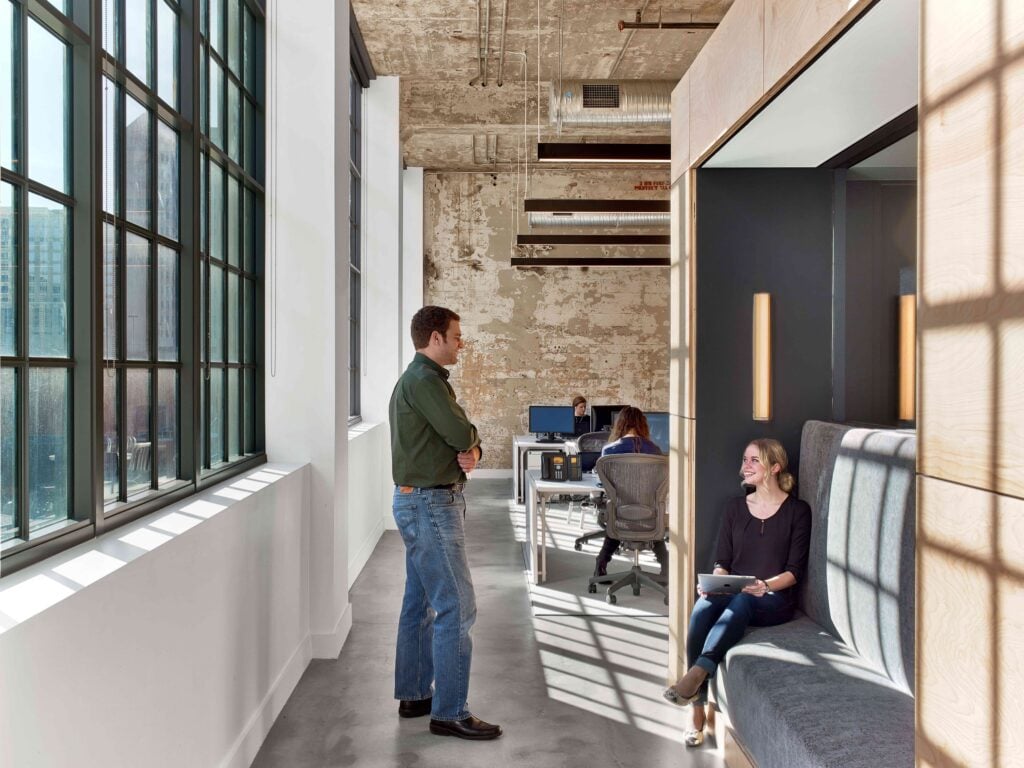The well being advantages of daylight are numerous.
In the case of bodily well-being and psychological well being, daylight gives important vitamin D, promotes wholesome bones and pores and skin, and improves one’s temper.
Most individuals, nevertheless, work indoors throughout daytime.
With a mixture of high-CRI, color-tunable LED lighting merchandise, daylight harvesting and a ground plan that features pure mild sources, akin to skylights and home windows, you possibly can improve your work or workplace lighting to supply most of the advantages of working outdoor underneath pure daylight.
The well being advantages of daylight
Absorbing pure daylight for Vitamin D synthesis is necessary. Daylight stimulates melatonin manufacturing and wake/sleep cycles, which aids in higher high quality sleep, bettering alertness through the daytime.
Publicity to daylight provides an extra vary of well being benefits, together with:
- Offering important Vitamin D to strengthen the immune system towards diseases akin to colds, influenza and allergic reactions, in addition to autoimmune ailments
- Sustaining the circadian rhythm, which regulates the sleep/wake cycle
- Combating despair, notably seasonal affective disorder (SAD)
- Therapeutic wounds (throughout World Battle I, Dr. Oskar Bernhard used sun therapy to deal with troopers’ wounds which prevented gangrene and tetanus)
- Serving to the physique to create endorphins, which relieve stress and lift vitality ranges
Analysis reveals that staff who work in an workplace with extra pure lighting sleep a median of 37 minutes longer per evening than workplace staff who don’t get any publicity to pure mild. Additionally, the optimistic results of daylight accumulate all through the week, as evidenced by staff’ cognitive checks through which they scored 42 percent increased.
The conclusion? It’s affordable and logical to acknowledge that pure lighting within the office leads to improved well-being and elevated productiveness.
Using daylighting
In line with the Nationwide Institute of Constructing Sciences, daylighting is the “managed admission of pure mild, direct daylight and diffused-skylight right into a constructing to scale back electrical lighting and saving vitality.”
“By offering a direct hyperlink to the dynamic and perpetually evolving patterns of outside illumination, daylighting helps create a visually stimulating and productive atmosphere for constructing occupants, whereas decreasing as a lot as one-third of complete constructing vitality prices.”
—Gregg Ander, Chief Architect of Southern California Edison

Earlier than the Fifties, the primary supply of sunshine for many industrial buildings was pure mild; they had been really constructed round this idea. However after the ‘50s, with the invention of fluorescent lighting, constructing design was altered. For instance, buildings not used excessive ceilings to accommodate ceiling-to-floor home windows for better pure mild publicity.
Forty years later, within the Nineties, constructing designers and designers revisited this idea. As an example, when a brand new Walmart was in-built Oklahoma, half of it leveraged daylighting with skylights whereas the opposite half used synthetic lighting. Gross sales monitoring confirmed that the half of the shop illuminated with pure mild noticed considerably increased gross sales.
A profitable daylighting system (or lighting management system) is not only about utilizing skylights and home windows; it’s additionally about utilizing a daylight-responsive lighting management system to make the most of daylight when it’s obtainable or electrical mild when it’s not.
Daylighting methods can be found for residential, industrial and industrial buildings and have quite a lot of lighting options, akin to:
- LED Color-Tunable Products: adjusting coloration temperature to attune lighting with the pure development of the solar
- Job Tuning: adjusting mild depth ranges based mostly on area necessities
- Daylight Harvesting: mechanically adjusting electrical lights’ brightness in response to levels of obtainable pure mild
- Occupancy Sensing: mechanically activating lights when folks enter an area and deactivating (or dimming) them) after folks depart
- Scheduling: automating lighting at pre-set instances, akin to turning lights off in a office on evenings and weekends
- Dimming Management: adjusting lights’ brightness on the consumer’s discretion
- Emptiness Sensing: occupants manually turning on lights with a sensor mechanically turning lights off when movement is just not detected
Colour-tunable lighting outlined
One other LED lighting expertise that may present a number of the advantages of daylight is coloration tuning. Colour-tunable lighting can modify to swimsuit particular person preferences or particular software wants.
There are three varieties of LED color-tunable lighting applied sciences:
- Dim-to-warm (coloration temperature vary 1,800K – 2,700K) mimics incandescent bulbs or candlelight
- Tunable-white lighting (2,700K – 5,000K) mimics daylight
- RGBW (Pink, Inexperienced, Blue, White) gives a full vary of coloration wheel and tunable-white lighting
Tunable-white and RGBW lights can simulate the colour temperature of daylight all through the day, transitioning from impartial white (3500K) within the morning to sunlight (5000K) noon after which heat white (2700K) because the day ends. This development helps productiveness and a wholesome circadian rhythm.

LED mild vs. daylight
It’s well-known that LED mild bulbs have lengthy lifespans, consuming much less energy than incandescent mild bulbs — typically as a lot as 90 percent much less.
But it’s much less broadly identified that LED bulbs present indoor lighting that may mimic daylight.
Pure mild LEDs evoke the hue and depth of pure daylight and assist to take care of the human physique’s pure circadian rhythm.
LED lights are available quite a lot of brightness ranges, together with a daylight variation, and may mimic pure mild in each coloration and depth. Excessive CRI (90+) LED lights have a better index of coloration accuracy in comparison with typical lighting methods. Which means their mild output extra carefully matches precise object colours as they seem in pure daylight.

Excessive CRI LED lighting with coloration temperatures starting from about 5200K-6400K is the closest that synthetic lighting can come to pure daylight.
Increasingly more houses, workplaces, school rooms and different areas through which folks spend loads of time are being geared up with tunable-white LED lighting that mechanically mimics daylight all through the day. Nevertheless it doesn’t need to be a matter of LED mild vs daylight. Moderately, utilizing a mixture of the 2 parts is right.
By altering from smooth, heat amber within the morning to shiny, cool white through the day after which again to amber within the night, this counteracts the disruptive impact of typical synthetic lighting on the physique’s circadian rhythm.
Options and advantages of excessive CRI LED lighting
Excessive CRI (90+) LED lighting has many options that make it very best for workplaces:
- It’s vitality environment friendly, with a lifespan of as much as 50,000 hours, requiring low upkeep and decreasing electrical energy prices
- It produces high-quality mild with a particularly correct coloration rendering index of 90 or increased, which is analogous to pure daylight in brightness and coloration
- With coloration tuning and dimming capabilities, you possibly can modify the depth and high quality of indoor lighting as wanted
- LED bulbs don’t emit ultraviolet (UV) radiation or comprise mercury, they usually scale back carbon emissions
Excessive CRI (90+) LED lighting additionally:
- Gives glorious coloration rendering, which is particularly necessary for duties that require correct coloration notion, akin to graphic design, images or portray
- Helps scale back eye pressure and fatigue attributable to lengthy working hours in poorly illuminated workspaces.
- May help improve productiveness and focus ranges all through the day
- Generates low warmth so there isn’t any threat of overheating or discomfort within the workspace
- Retains a cushty indoor air temperature year-round
Learn how to simulate daylight in an workplace with LED lighting
Working at a desk in an workplace could be exhausting when there isn’t sufficient daylight. Pure mild is crucial for restoring vitality and provoking creativity. Nevertheless, when sunshine is unavailable, there are nonetheless methods to simulate daylight.
The next ideas rely on the format of particular person workplaces – some merely don’t have floor-to-ceiling home windows or an possibility so as to add a skylight – and right here’s the best way to simulate daylight in an workplace:
- Regulate blinds to let in as a lot pure daylight as doable
- Strategically place LED full-spectrum mild bulbs round a room
- Place daylight reflection merchandise close to home windows or partitions for added sunlight-simulated brightness
- Use color-tunable lighting that mimics daylight and adjusts its depth based mostly on the time of day and seasons
- Enhance the brightness of LED lights – brightness is measured in lumens and daylight has a luminescence of round 20,000 lumens
- Regulate the colour temperature of LED bulbs to 5500K to create daylight ambiance
- Use selection in lighting sources – combine LED bulbs with daylight or skylights and incorporate accent lights that present oblique lighting
- Use wall sconces all through the workplace to counteract the glare of direct overhead illumination

Conclusion: Utilizing Indoor Lighting that Mimics Daylight
The well being advantages of daylight are well-known. However should you can’t work outdoor, then utilizing indoor lighting that mimics daylight – i.e., LED lighting with coloration tuning and excessive CRI (90+) – can simulate a number of the advantages by offering correct coloration rendition and decreasing eye pressure throughout lengthy durations of concentrated work.
In addition to being extra vitality environment friendly than different synthetic lighting options, LED lighting utilized in mixture with skylights and strategically positioned lamps and different lights is a superb strategy to convey lighting that fosters a wholesome circadian rhythm in any workplace setting.
Pure Gentle LED FAQ
Sure, LED lights can mimic daylight to some extent by offering correct coloration rendition and decreasing eye pressure. LED lighting with a excessive Colour Rendering Index (CRI) ranking of not less than 90 can present the well being advantages of pure daylight.
LED lighting with a excessive CRI ranking of 90 or increased. LEDs can mimic the hue and depth of pure daylight and assist to take care of the human physique’s pure circadian rhythm as a result of LED elements permit for finer changes of coloration, brightness and depth.
Simulating daylight in an workplace could be achieved by utilizing LED lights with a excessive CRI ranking of 90+ to make sure correct coloration rendition. The position of the LEDs ought to imitate these discovered outdoor, strategically positioned on the ceiling or partitions round desks for optimum protection.
Use color-tunable lighting that adjusts the brightness and temperature of sunshine to imitate daylight all through the day. Brightness is measured in lumens and daylight has a luminescence of round 20,000 lumens, whereas 5000K creates a extra daylight-like atmosphere.
Use a daylighting system – i.e. a daylight-responsive lighting management system – to take full benefit of daylight when it’s obtainable or electrical mild when it’s not.
Together with LED lighting, incorporating skylights into your workplace format is a superb strategy to convey pure daylight indoors and supply well being advantages related to publicity to sunlight.
Source link

